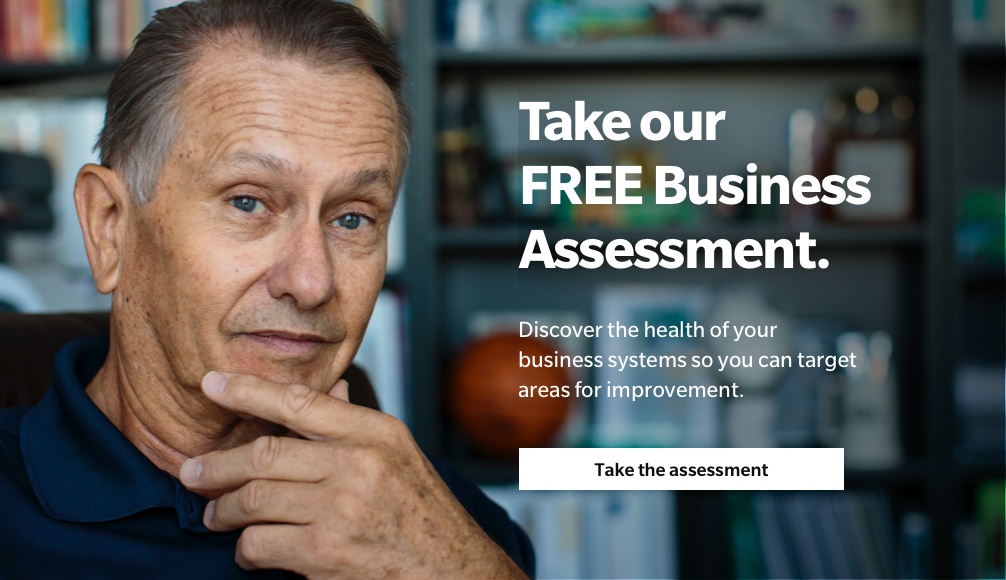As a business owner, you’re passionate about the product or service you offer—that’s one of the reasons you started a business in the first place. And whatever your industry—whether it’s running a photography studio, or making cutting-edge phone cases—you’ve likely dedicated hundreds (even thousands) of hours engaging with customers, getting your product into their hands in a way that creates a great experience for them. You’ve treated your product as your product, and have perhaps become the only person in the company who can really provide the right level of engagement for your customers. That’s exhausting work—and it doesn’t have to be this way.
The truth is, your business isn’t just about what you make—your business is your product. Everything you do as a leader to sell your product or service affects how your customers feel about their experience, and that includes building a systematized customer fulfillment strategy that doesn’t rely exclusively—or even at all—on you. So what does it take to create a satisfying customer experience that doesn’t require you every step of the way, one that gives you space to do your most important work while still delighting your customers?: A vision, a promise, and the systems to back it up.
Create a vision for your customer’s ideal experience
A fundamental part of a strong Customer Fulfillment System is envisioning what you want your customer’s ideal experience to feel like. After all, most people tend to make purchases based on their emotions, and then back that decision up with logic. They’re not just buying a product or service—they’re buying familiarity, reassurance, reliability and convenience.
Start by honing in on the essentials: How are you reaching out to your prospects? Determine what you offer that your competitors do not, and what specifically brings them back to your business as a repeat customer. And always ask yourself, “What can we be doing better?"
Here are some other questions to help shape your vision:
- What do you want your customer to say about their experience?
- What do you think is most important to them?
- What frustrations are you solving for them?
- What desires are you fulfilling?
- Why do you believe they chose your business over your competitors’?
- What one thing do your customers want more than anything else from your product, service or company?
Design your own Brand Promise
With a vision of your ideal customer experience, you can start the work of drafting your Brand Promise: The foundational statement that defines what you want the connection between your business and your customers to be. Your brand fosters the emotional connection that your customers have with your business—how it makes them feel, what it reminds them of, why they chose (or should choose) your product or service over your competitors’.
Of course, it helps to understand who your ideal customer is and what they’d want out of an experience with your company. That information, along with how you can deliver on it, will drive your Customer Fulfillment System. But even without this, you can create a strong draft just by identifying your company values and weaving them together with your vision. Try putting all your notes on the questions above into words, starting with one of these two phrases:
- In every interaction with our business, I want our customers to feel ...
- The one thing I want our customers to know about us ...
Hire the right people to deliver on your promise
Like some other business owners, you may believe that customer experience starts within the sales pipeline. But it starts well before that, with your recruiting and hiring process—more specifically, with a values-based hiring process, one that brings people who align with your company culture. Without such a process in place, you could unintentionally build a culture based on the assumption that your employees understand and share your values. To hire the right people, you first need to know who you’re looking for—and that should be someone who both has the skills for the role and shares your company values. By hiring with company culture in mind, you ensure stability among your team, and consistency in their way of representing your values internally and with every customer interaction.
Put strong delivery systems into place
Having interconnected systems in place is the only way to solve challenges and avoid potential issues within your Customer Fulfillment processes. With the right vision and people in place, the next stop is to align this with your delivery systems. Delivery is all about how your product is transported and experienced, but it isn’t just about the physical delivery—it’s also about how your emotional Brand Promise is delivered. It’s about getting the product in your customer’s hands and getting your company a special spot in their heart. Here are the five concepts to include in your end-to-end delivery system:
- Timeliness—Customers want a consistent and on-time delivery.
- Convenience—Sometimes convenience trumps the product itself. How can you deliver your product or service more conveniently than your competitors can?
- Accuracy—A flawless experience with a strong attention to detail alleviates stress for you and your customer.
- Personal impact—Connecting logistical points to evaluate how the entire buying journey emotionally impacts your customer.
- Responsiveness—Offer your customers the chance to voice their opinions and engage in responsive dialogue.
By breaking down the steps and working on five key delivery components, you’ll further eliminate the stress of feeling like you can’t step away.
Invest (others’) time and talent in customer service
Customer service is a vital part of customer experience; the stronger the system, the more likely your team will be able to answer and solve your customers’ questions and issues. Not only can you meet the Brand Promise you’ve established with your customers—you can exceed it. Create a comprehensive employee training to outline the values of your customer service experience, make sure your entire team is onboard with this vision, and document the systems behind it. Here are some of the key components to include in your approach to customer service.
- Attitude—A respectful and friendly attitude is a must.
- Assistance—The more opportunities your business has to offer assistance to your customers, the more opportunities you have to truly connect.
- Training—Your customers will benefit from knowing how to make the most of the products or services you provide.
- Maintenance—Offering your customers courtesy maintenance service for your product or service builds a positive connection and can help you stand out from other companies.
- Credit/Financial Services—Providing financial services or credit to your customers shows that you want to make your exchange work for them, helping to build a relationship of trust.
You know that your business depends on its customers to keep going—but when you’re convinced that you’re the only one capable of providing that ideal customer experience, you’re trapping yourself in the overwhelm of the day-to-day delivery and service tasks. Instead, take charge and systematize how your company’s team can consistently deliver on its Brand Promise—without you. It’s possible, and it’s our promise to show you how we can help.




Comments